6 Exploring the People of the Book: Judaism, Christianity, and Islam
“The God of Jews, Christians, and Muslims is a God who—in some sense—speaks. His word is crucial in all three faiths. The Word of God has shaped the history of our culture. We have to decide whether the word ‘God’ has any meaning for us today.”
— Karen Armstrong, A History of God: The 4,000-Year Quest of Judaism, Christianity, and Islam, 1993
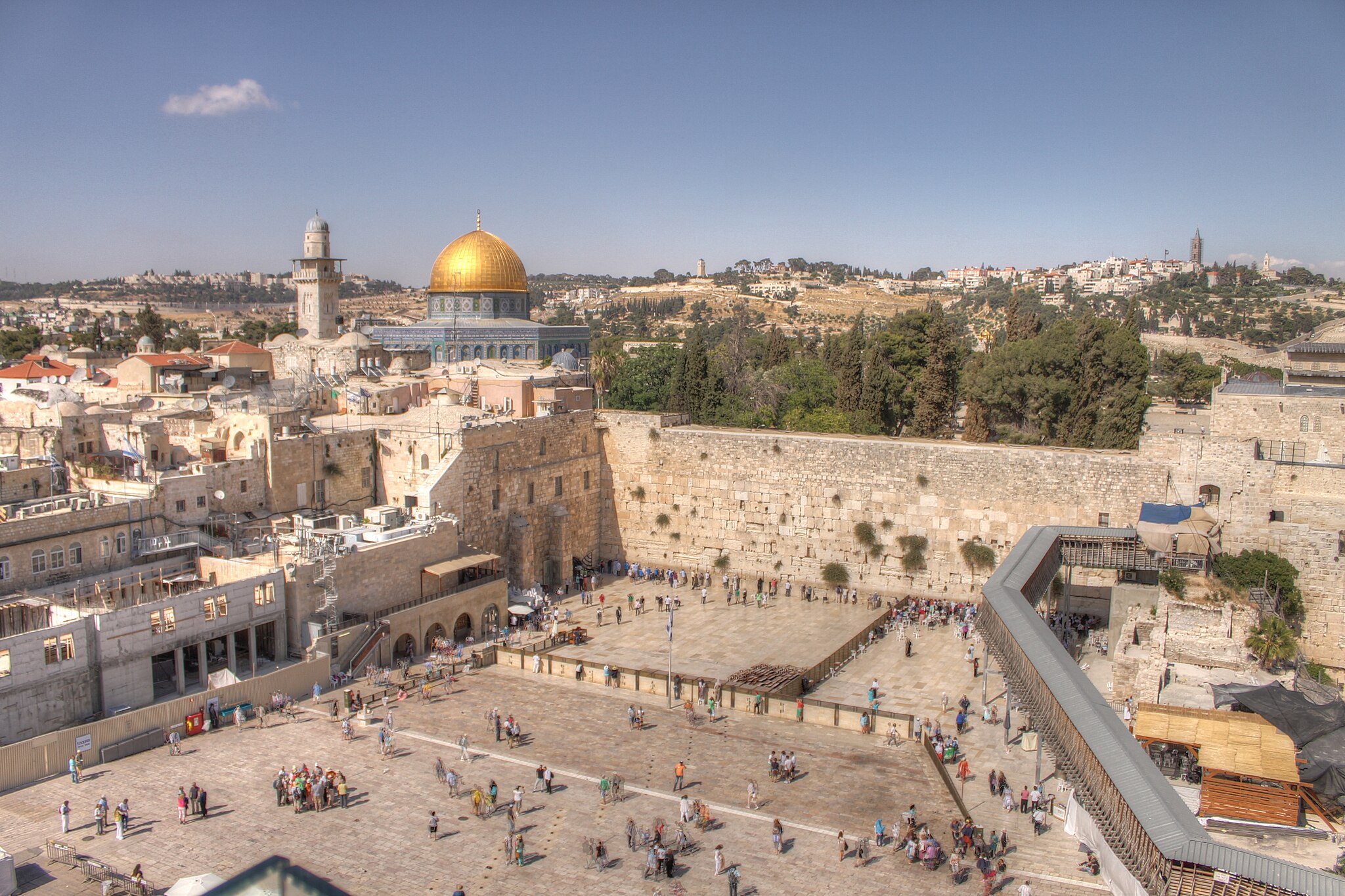
Introduction: Three Traditions, One Foundation

Judaism, Christianity, and Islam represent three of the world’s most influential religious traditions, collectively claiming over half of the global population as adherents. These faiths share fundamental characteristics that distinguish them from other world religions: monotheistic belief in one supreme deity, reverence for written scripture, and prophetic traditions that emphasize divine revelation through chosen messengers. Their common heritage has earned them the designation “Abrahamic religions,” reflecting their shared patriarch whose covenant with God established the foundation for all three traditions. The Arabic term “People of the Book” (Ahl al-Kitāb) reflects this shared heritage.
The geographical origins of these faiths in the ancient Near East created opportunities for centuries of interaction, exchange, and mutual influence. Each tradition developed distinct theological perspectives, ritual practices, and cultural expressions while maintaining core beliefs about divine unity, human responsibility, and ultimate judgment. This shared foundation enabled periods of remarkable cooperation and intellectual exchange, particularly during the Islamic Golden Age, when Muslim, Jewish, and Christian scholars collaborated in preserving and advancing human knowledge.
Understanding these traditions requires recognizing both their individual characteristics and their complex historical relationships. While theological differences have sometimes generated conflict, the three faiths have also demonstrated remarkable capacity for coexistence and mutual enrichment. Their emphasis on ethical monotheism, scriptural authority, and prophetic revelation has profoundly shaped global civilization, influencing law, philosophy, art, and social institutions across cultures and continents.
This video from History Skills provides a brief overview of the three religions and their common roots.
Reflection Question
The Foundation: Judaism and Monotheistic Innovation
Judaism emerged approximately 4,000 years ago as one of humanity’s earliest monotheistic traditions, fundamentally transforming religious thought by asserting the existence of one universal creator deity. This revolutionary concept challenged the polytheistic worldviews that dominated ancient Near Eastern civilizations, establishing theological foundations that would later influence Christianity and Islam.
Origins and Historical Development

The Jewish tradition traces its origins to Abraham (originally Abram), whom God called to leave his homeland in Mesopotamia and journey to Canaan around 2000 BCE. Abraham’s covenant with God established the fundamental relationship between the divine and the Jewish people, creating a model of faith based on trust, obedience, and divine promise. This covenant was renewed through Isaac, Jacob (later renamed Israel), and subsequent generations, creating the narrative framework for Jewish identity and purpose.
The formative period of Jewish history included the Egyptian bondage and Exodus under Moses’ leadership, events that established core Jewish concepts about divine liberation, law, and covenant community. The revelation at Mount Sinai, where Moses received the Torah including the Ten Commandments, provided the legal and ethical foundation for Jewish life. This experience emphasized that divine law governs both religious ritual and social justice, creating an integrated approach to spiritual and communal life.
The establishment of the Israelite kingdoms under Saul, David, and Solomon represented the political zenith of ancient Jewish civilization. The construction of Solomon’s Temple in Jerusalem created a central sanctuary that unified Jewish worship and established Jerusalem as the spiritual center of the tradition. However, the kingdom’s division, conquest by Assyrian and Babylonian empires, and the destruction of the First Temple in 586 BCE initiated the Jewish experience of diaspora—dispersion throughout the ancient world while maintaining religious and cultural identity.
Core Teachings and Practices
Judaism centers on the Shema, the fundamental declaration that “Hear, O Israel: The Lord our God, the Lord is one” (Deuteronomy 6:4). This affirmation of divine unity (monotheism) serves as the foundation for all Jewish belief and practice. The tradition emphasizes that God is transcendent yet involved in human history, establishing covenantal relationships with individuals and communities based on mutual commitment and responsibility.
The Torah, consisting of the Five Books of Moses, provides comprehensive guidance for Jewish life through 613 commandments (mitzvot) that govern religious ritual, ethical behavior, and social relationships. These commandments address both ceremonial obligations like Sabbath observance and dietary laws (kashrut) and ethical requirements including justice, charity, and honest business practices. Jewish interpretation emphasizes that ritual and ethics are inseparable, with both contributing to the sanctification of daily life.
Jewish practice revolves around weekly Sabbath observance, annual festivals like Passover and Yom Kippur, and life-cycle ceremonies including brit milah (circumcision), bar/bat mitzvah (coming of age), and marriage under the chuppah (wedding canopy). These observances create rhythms of sacred time that connect individual and community life with divine purpose and Jewish historical memory.
Cultural Connections
- Learn more about the world’s oldest Torah scroll in this article from the BBC.
- For an overview of Jewish contributions to philosophy, see this article.
- This article explores synagogue architecture throughout history.
- This guide from the BBC explains the main differences between orthodox and reformed Judaism.
Jewish Contributions to Civilization
Throughout their long diaspora experience, Jewish communities made extraordinary contributions to human civilization while maintaining their distinct religious and cultural identity. Jewish emphasis on literacy, textual study, and rational inquiry fostered traditions of scholarship that enriched the societies where Jewish communities settled. The Talmudic method of argumentation and analysis influenced legal reasoning and philosophical methodology far beyond Jewish contexts.
Jewish philosophers like Maimonides (1135-1204) created sophisticated syntheses of religious faith and Aristotelian philosophy that influenced Christian and Islamic thinkers. Jewish contributions to medicine, science, and mathematics during the medieval period demonstrated how religious commitment could enhance rather than hinder intellectual achievement. In modern times, Jewish scholars and scientists have made foundational contributions to psychology, physics, economics, and other fields while maintaining their religious heritage.
The Jewish experience of persecution and survival created insights into human rights, social justice, and minority protection that have influenced modern democratic theory and international law. Jewish emphasis on education, community responsibility, and ethical behavior has contributed to social reform movements and humanitarian organizations throughout the world.
This video from Harvard University’s free EdX course “Judaism through Its Scriptures” provides a brief overview.
Christianity: From Jewish Sect to Global Religion
Christianity began as a Jewish renewal movement in 1st-century Palestine but rapidly evolved into a distinct religious tradition that spread throughout the Roman Empire and beyond. The figure of Jesus of Nazareth, whom Christians acknowledge as the Christ (Messiah), served as the catalyst for this transformation, though the development of Christian theology and practice involved complex interactions between Jewish heritage, Hellenistic philosophy, and Roman imperial culture.
The Life and Teaching of Jesus

Jesus of Nazareth lived and taught in Palestine during the early 1st century CE, a period of political tension between Jewish communities and Roman imperial authority. The Gospels of Matthew, Mark, Luke, and John, written several decades after Jesus’ death, present him as a Jewish teacher who emphasized love of God and neighbor, forgiveness of sins, and the coming of God’s kingdom. His teaching method used parables—brief stories that conveyed spiritual truths through everyday experiences—to make profound theological concepts accessible to ordinary people.
Jesus’ ministry attracted followers from diverse social backgrounds, including fishermen, tax collectors, and women who played prominent roles in early Christian communities. His emphasis on spiritual rather than political liberation initially disappointed some Jews who expected the Messiah to restore political independence, but his message of universal love and divine grace appealed to many who felt marginalized by religious or social hierarchies.
The crucifixion of Jesus under Roman authority around 30 CE initially appeared to end his movement, but his followers’ conviction that he had risen from the dead transformed their grief into missionary zeal. The resurrection became the central Christian claim, distinguishing Christianity from other Jewish movements and providing the theological foundation for Christian beliefs about salvation, eternal life, and Jesus’ divine nature.
Early Christian Development and Expansion
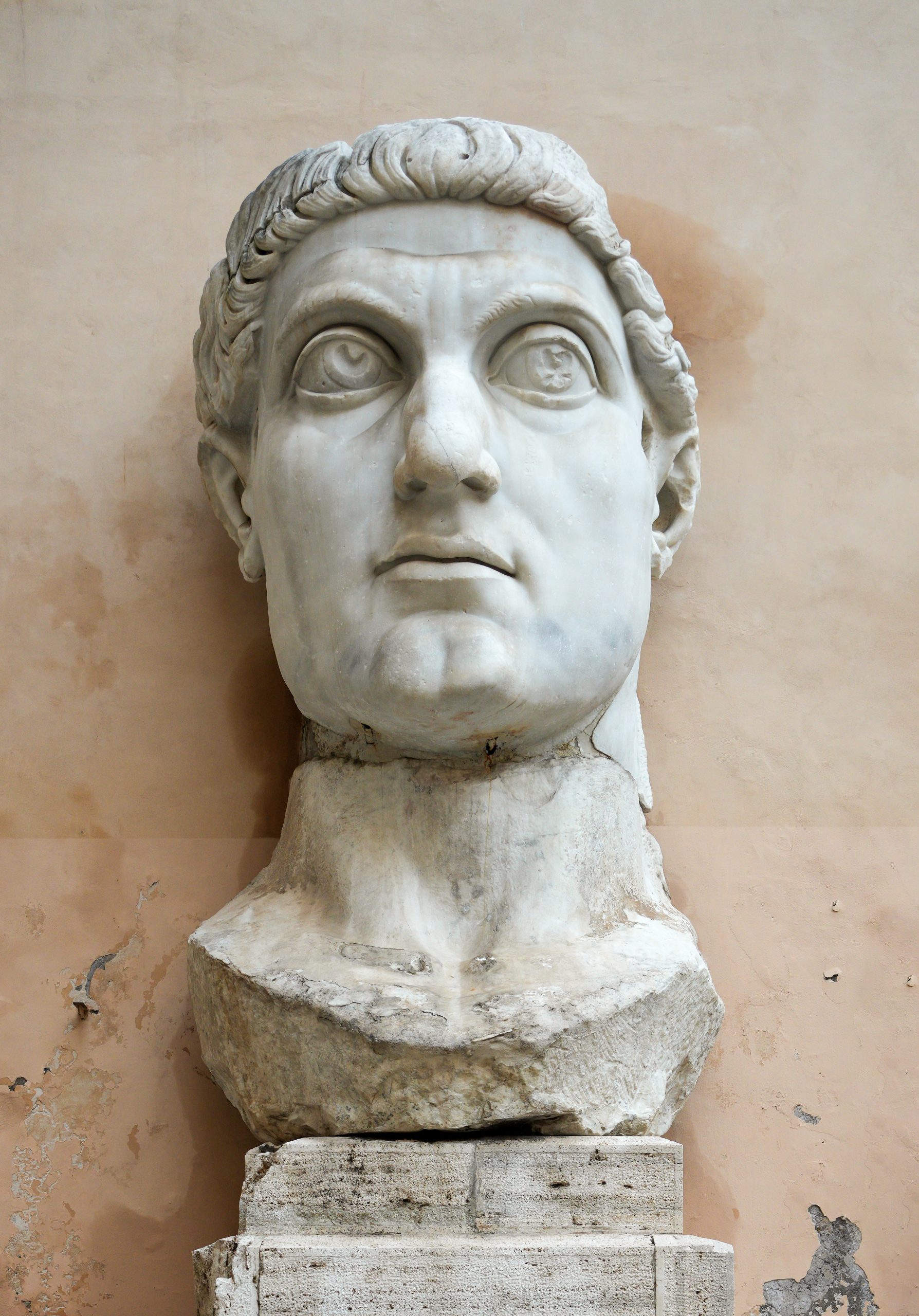
The apostle Paul played a crucial role in transforming Christianity from a Jewish sect into a universal religion by arguing that Gentiles (non-Jews) could become Christians without first converting to Judaism. This decision, reached after considerable debate within early Christian communities, enabled Christianity to spread rapidly throughout the Roman Empire while adapting to diverse cultural contexts.
Early Christian communities developed distinctive practices including weekly gatherings for worship, baptism for initiation, and the Eucharist (communion) as a central ritual remembering Jesus’ death and resurrection. These practices created strong community bonds while maintaining theological focus on Jesus as the unique mediator between God and humanity.
The persecution of Christians under various Roman emperors, from Nero through Diocletian, created a tradition of martyrdom that strengthened Christian identity and commitment. However, Emperor Constantine’s conversion in the early 4th century and his Edict of Milan (313 CE) established Christian tolerance, leading eventually to Christianity becoming the official religion of the Roman Empire under Theodosius in 380 CE.
Christian Theology, Cultural Adaptation, and Contributions to Civilization
Christian theology developed through centuries of reflection on the relationship between Jesus’ divine and human natures, culminating in the Council of Nicaea (325 CE) and the doctrine of the Trinity—the understanding that God exists as Father, Son, and Holy Spirit in perfect unity. This theological development demonstrated Christianity’s capacity to incorporate sophisticated philosophical reasoning while maintaining biblical foundations.
As Christianity spread beyond the Roman Empire, it adapted to diverse cultural contexts while preserving core theological convictions. Celtic Christianity in Ireland and Britain, Coptic Christianity in Egypt, and Ethiopian Christianity each developed distinctive characteristics while maintaining connection to broader Christian tradition. This adaptability enabled Christianity to become truly global while respecting local cultures and practices.
The division between Eastern (Orthodox) and Western (Roman Catholic) Christianity, formalized in 1054 CE, reflected both theological differences and cultural divergences between Greek and Latin Christian traditions. Later, the Protestant Reformation of the 16th century created additional diversity within Western Christianity, emphasizing individual relationship with God and vernacular scripture reading.
This video from Harvard University’s free EdX course “Christianity through Its Scriptures” provides a brief overview.
Cultural Connections
- For more information about early Christian art and architecture, see Smart History.
- Dartmouth has this overview of medieval monastery preservation of classical texts
- The Washington Cathedral is a modern example of Gothic cathedral architecture and has an overview of the main architectural elements and their theological symbolism
- Oxford University has this overview of Renaissance art depicting Christian themes and narratives
Islam: The Final Revelation
Islam emerged in 7th-century Arabia through the prophetic ministry of Muhammad, whom Muslims regard as the final messenger in a series of divine revelations that began with Abraham and included Moses and Jesus. The word “Islam” means “submission to God,” reflecting the tradition’s emphasis on complete surrender to divine will as expressed through the Quran, which Muslims believe contains God’s final and complete revelation to humanity.
Muhammad and the Origins of Islam

Muhammad ibn Abdullah was born around 570 CE in Mecca, a commercial center in the Arabian Peninsula known for its religious diversity and tribal social organization. According to Islamic tradition, Muhammad experienced his first divine revelation through the angel Gabriel (Jibril) around 610 CE while meditating in a cave outside Mecca. These revelations, continuing over approximately 23 years, were memorized by early Muslim communities and later compiled into the Quran.
Muhammad’s early preaching emphasized monotheism, social justice, and moral reform in a society characterized by tribal warfare, economic inequality, and polytheistic religion. His message attracted followers among Mecca’s marginalized populations but generated opposition from established tribal and commercial leaders who viewed monotheism as a threat to traditional religious and economic systems.
The Hijra (emigration, also referred to as hegira) to Medina in 622 CE marked the beginning of the Islamic calendar and the establishment of the first Muslim community (ummah) under Muhammad’s leadership. In Medina, Muhammad served as both spiritual leader and political administrator, demonstrating Islam’s integration of religious and social governance. The Constitution of Medina established principles of religious tolerance and communal cooperation that included Jewish and Christian communities.
Core Islamic Teachings and Practices
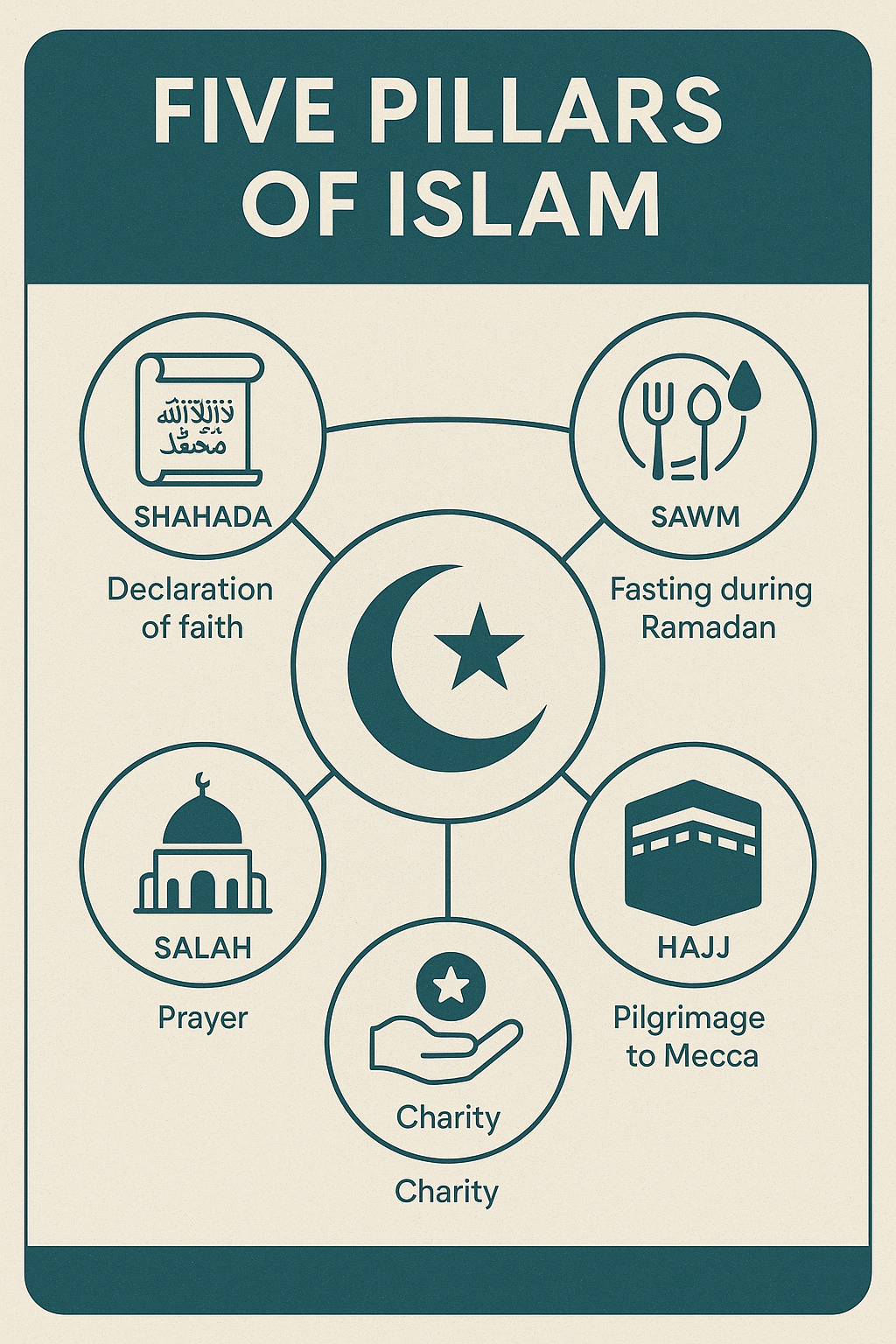
Islam rests on five fundamental pillars that structure Muslim religious life: the declaration of faith (shahada), prayer (salah), charity (zakat), fasting during Ramadan (sawm), and pilgrimage to Mecca (hajj). These practices create rhythms of individual devotion and community solidarity while expressing Islam’s emphasis on submission to divine will in all aspects of life.
The Quran serves as Islam’s primary scripture, believed by Muslims to be the direct word of God revealed in Arabic through Muhammad. The Quran addresses theological questions, moral guidance, legal principles, and social organization while maintaining literary excellence that Muslims consider miraculous. Supplementing the Quran, the Hadith literature preserves Muhammad’s sayings and actions, providing additional guidance for Islamic law and practice.
Islamic theology emphasizes God’s absolute unity (tawhid), rejecting any form of polytheism or association of partners with God. This strict monotheism influences Islamic art, which traditionally avoids representational imagery in religious contexts, instead developing sophisticated geometric patterns and calligraphy that reflect divine perfection and unity.
Islamic Expansion and Cultural Synthesis
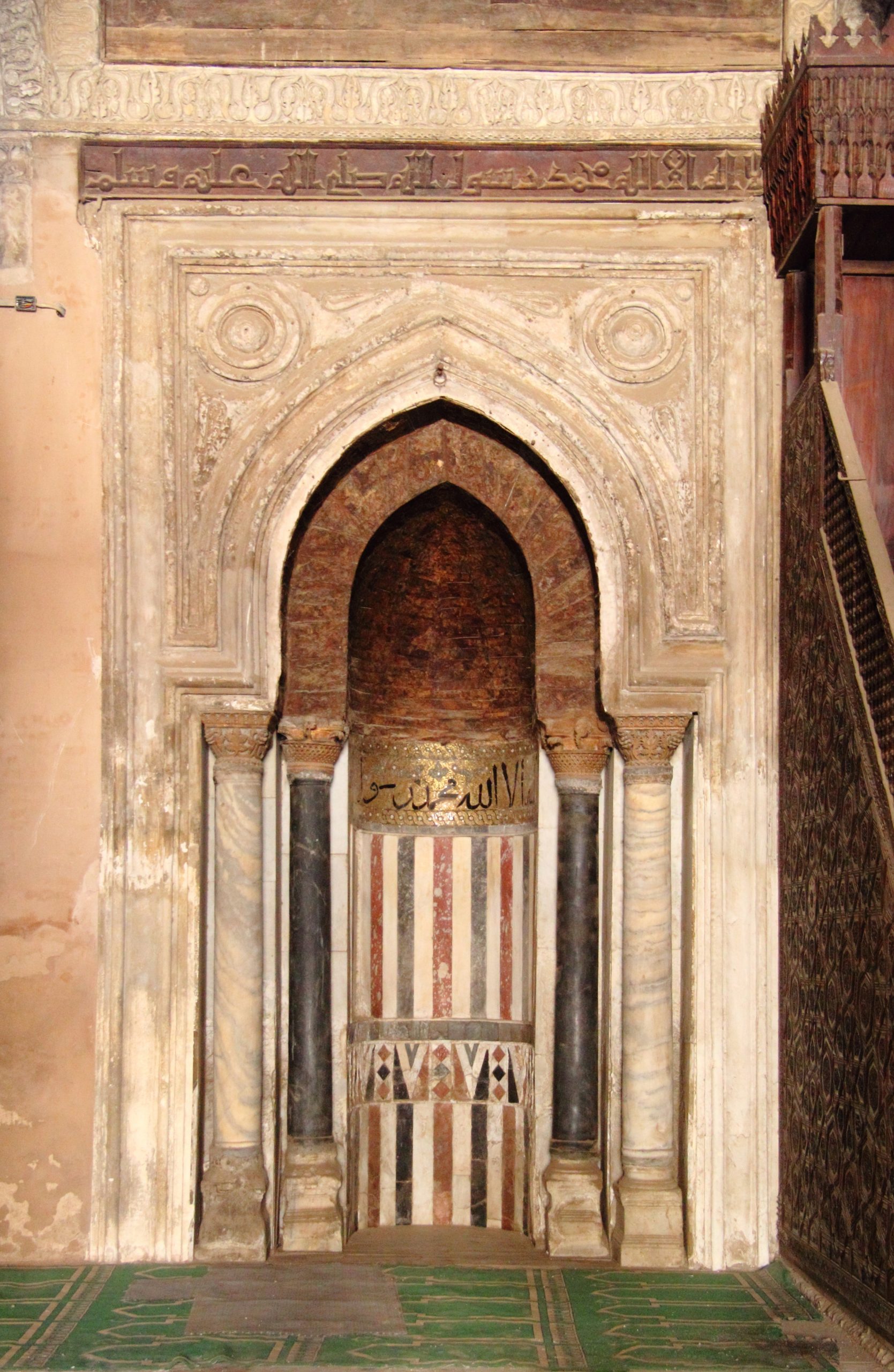
Following Muhammad’s death in 632 CE, Islamic expansion under the Rashidun and Umayyad caliphs created one of history’s largest empires, stretching from Spain to Central Asia within a century. This rapid expansion facilitated cultural exchange between diverse civilizations while establishing Arabic as a lingua franca for scholarship and administration.
The Islamic Golden Age (8th-13th centuries) represented one of history’s greatest periods of intellectual achievement, as Muslim scholars preserved, translated, and expanded upon Greek philosophy, Persian literature, Indian mathematics, and Chinese technology. Cities like Baghdad, Córdoba, and Cairo became centers of learning where Muslim, Jewish, and Christian scholars collaborated in advancing human knowledge.
Islamic contributions to civilization include algebra, optics, medicine, astronomy, and geography, as well as architectural innovations like pointed arches, geometric decoration, and sophisticated water management systems. The Islamic emphasis on rational inquiry, empirical observation, and international scholarly exchange laid foundations for later scientific developments.
This video from Harvard University’s free EdX course “Islam through Its Scriptures” provides a brief overview.
Cultural Connections
- Learn more about Islamic calligraphy and geometric art traditions here.
- To learn more about the role of Arabic translations of classical Greek texts and how this led to a scientific revolution, see this article.
- Smart History has a good overview of mosque architecture with examples.
- Here’s an overview of American contemporary Muslim communities and their diverse cultural expressions
Sacred Texts and Shared Heritage
The three Abrahamic traditions share remarkable textual interconnections that demonstrate their common heritage while illustrating their distinctive theological developments. Each tradition developed sophisticated approaches to scriptural interpretation, preservation, and application that influenced their respective cultures and contributed to global literary and legal traditions.
Hebrew Scripture and Christian Adaptation
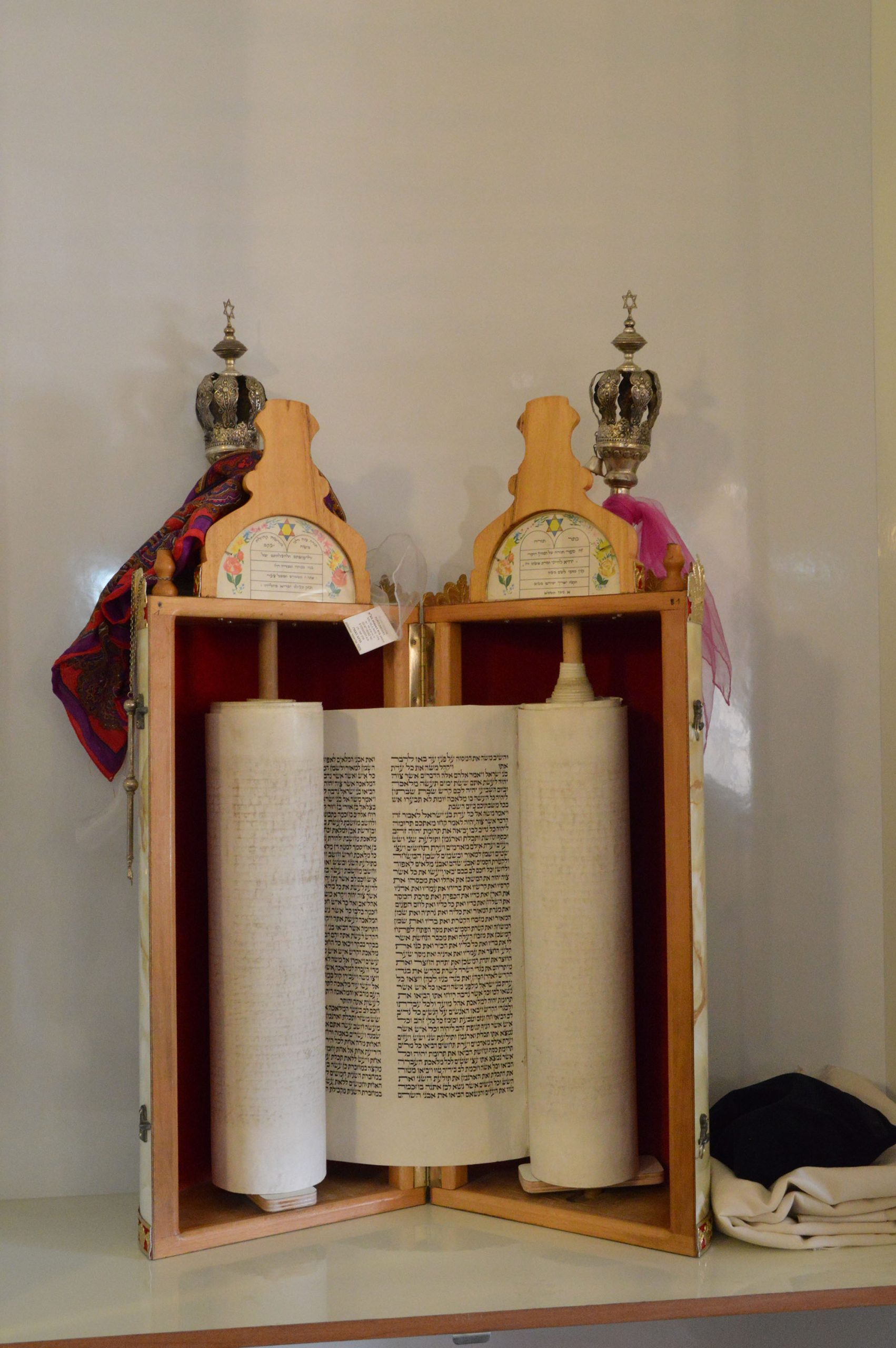
The Hebrew Bible (Tanakh) forms the foundation for both Jewish and Christian scriptural traditions, though each tradition interprets these texts through different theological lenses. Jewish interpretation emphasizes the eternal validity of Torah law and the special covenant relationship between God and the Jewish people. Christian interpretation sees Hebrew Scripture as preparation for the coming of Christ, with Old Testament prophecies finding fulfillment in Jesus’ life and ministry.
The development of the Septuagint, a Greek translation of Hebrew Scripture created for Hellenistic Jewish communities, facilitated Christianity’s spread throughout the Roman Empire by making Jewish religious texts accessible to Greek-speaking audiences. Early Christian communities adopted this translation, creating continuity between Jewish and Christian scriptural traditions while enabling theological innovation.
Christian addition of the New Testament to Hebrew Scripture created a larger biblical canon that includes Gospels, epistles, and apocalyptic literature. This expanded scripture enabled Christianity to address theological questions about Jesus’ nature and mission while maintaining connection to Jewish covenant history and prophetic expectations.
The Quran and Previous Revelations

Islamic tradition acknowledges the Torah and Gospel as authentic divine revelations while maintaining that the Quran represents God’s final and complete message to humanity. The Quran frequently references biblical figures including Abraham, Moses, and Jesus, presenting them as earlier prophets in a continuous line of divine revelation culminating in Muhammad’s ministry.
This perspective enabled early Muslim communities to engage respectfully with Jewish and Christian traditions while asserting Islam’s distinctive claims about final revelation and universal application. The Quran’s linguistic excellence in Arabic became a central element of Islamic faith, with the text’s inimitability (i’jaz) serving as evidence of its divine origin.
The preservation of the Quran through memorization and careful textual transmission created one of history’s most stable religious texts, enabling Muslim communities worldwide to maintain identical scriptural traditions across diverse cultural contexts. This textual unity provided a foundation for Islamic law and theology while enabling diverse cultural expressions of Islamic faith.
Comparative Approaches to Scripture
All three traditions developed sophisticated methods of scriptural interpretation that balance literal reading with allegorical understanding, legal application with spiritual insight, and traditional authority with contemporary relevance. Jewish tradition produced extensive Talmudic literature that applies Torah principles to changing circumstances. Christian tradition developed patristic and scholastic approaches to biblical interpretation that address theological and practical questions. Islamic tradition created comprehensive systems of Quranic commentary and legal reasoning that guide Muslim life and thought.
These interpretive traditions demonstrate how scriptural communities maintain textual authority while adapting to historical change and cultural diversity. The scholarly methods developed within each tradition have influenced legal reasoning, literary criticism, and philosophical methodology far beyond religious contexts.
Art, Architecture, and Cultural Expression
The artistic traditions of Judaism, Christianity, and Islam reflect both their shared heritage and their distinctive theological emphases. Each tradition developed characteristic approaches to sacred space, decorative arts, and cultural expression that demonstrate how religious belief translates into material culture while adapting to diverse aesthetic preferences and available resources.
Jewish Artistic Traditions
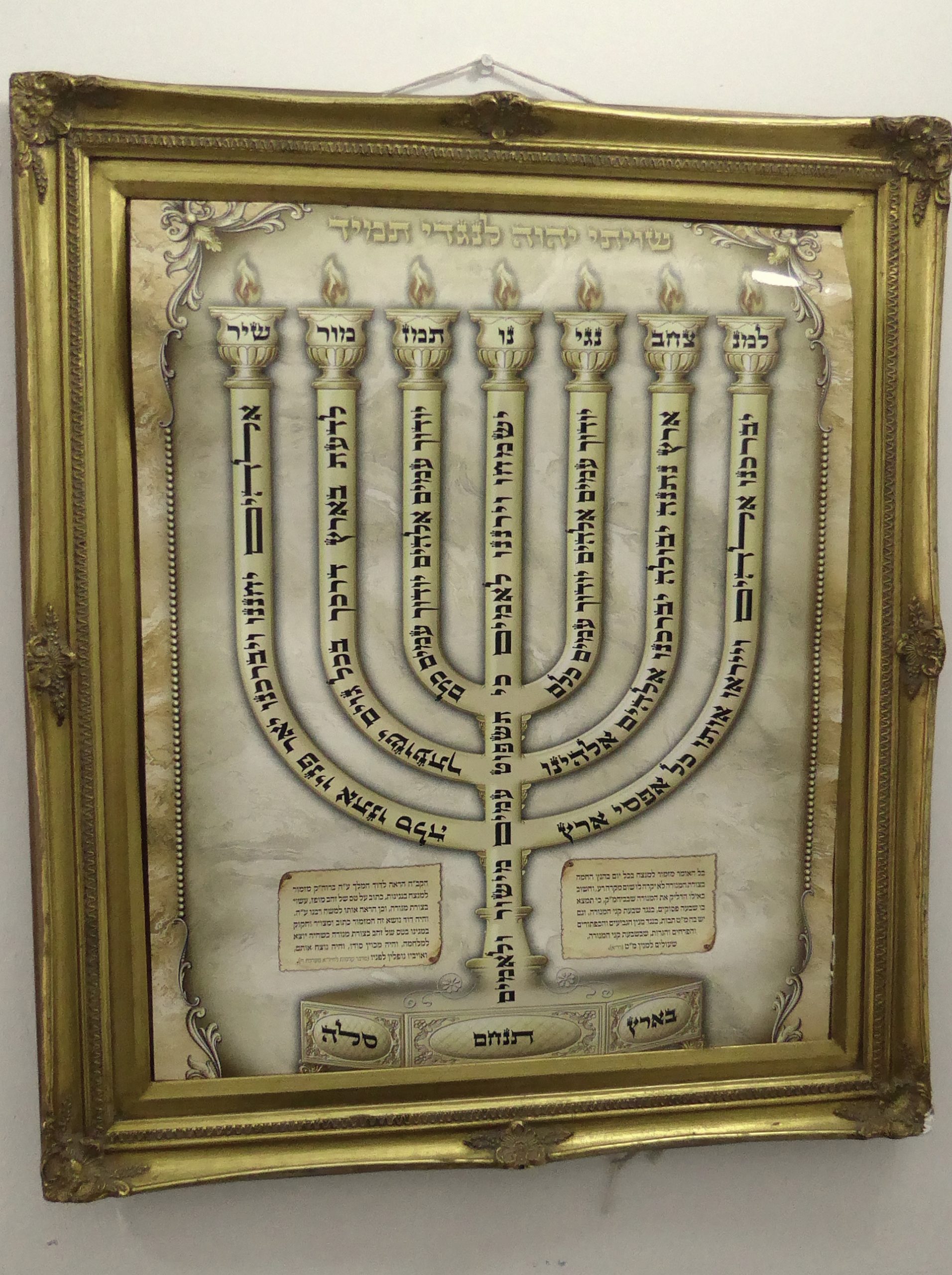
Jewish artistic expression has been profoundly influenced by the Second Commandment’s prohibition against graven images, leading to distinctive approaches that emphasize symbolic rather than representational art. Synagogue architecture typically features clean lines, geometric patterns, and symbolic elements like the Star of David and menorah while avoiding figurative sculpture or painting in religious contexts.
The development of Jewish ritual objects including Torah scrolls, mezuzahs, and ceremonial items demonstrates sophisticated craftsmanship that serves religious function while expressing aesthetic excellence. Hebrew calligraphy became a particularly refined art form, with scribes developing elegant techniques for copying sacred texts that combine spiritual devotion with artistic achievement.
Jewish communities in different regions adapted local artistic styles while maintaining distinctively Jewish symbolic elements. Sephardic Jews (who lived in Spain and Portugal) developed different aesthetic traditions from Ashkenazi communities in Central and Eastern Europe, while Mizrahi Jewish art reflected Middle Eastern and North African influences. These regional variations demonstrate Judaism’s capacity to maintain religious identity while participating in diverse cultural contexts.
Christian Artistic Development
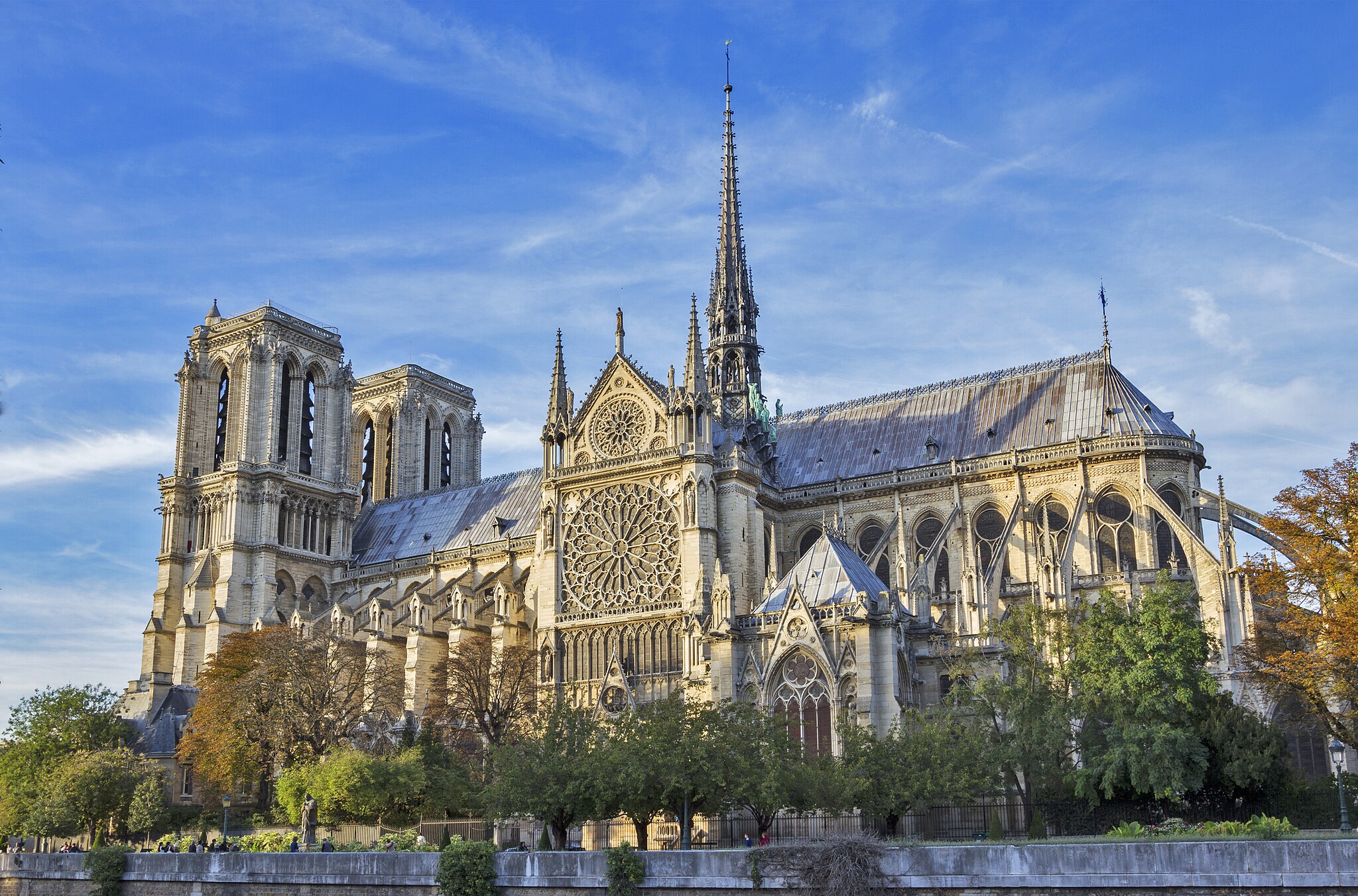
Christian art evolved from its origins in Roman catacombs to become one of history’s most influential artistic traditions. Early Christian symbols like the fish, anchor, and chi-rho provided coded identification for persecuted communities, while later imperial Christianity developed magnificent basilicas and elaborate iconographic programs that made theological concepts accessible to largely illiterate populations.
The development of Byzantine iconography created distinctive Christian artistic forms that emphasized spiritual rather than naturalistic representation. The controversy over religious images (iconoclasm) in the 8th and 9th centuries demonstrated Christianity’s ongoing negotiation between divine transcendence and incarnational theology, ultimately affirming the spiritual value of religious art.
Medieval Christian architecture achieved extraordinary sophistication in Romanesque and Gothic cathedrals that combined engineering innovation with theological symbolism. These structures served as “books in stone” that taught Christian doctrine while creating sacred spaces for worship and pilgrimage. Renaissance Christian art achieved new heights of artistic excellence while maintaining theological content, demonstrating Christianity’s capacity to engage with secular learning and aesthetic achievement.
Islamic Artistic Innovation
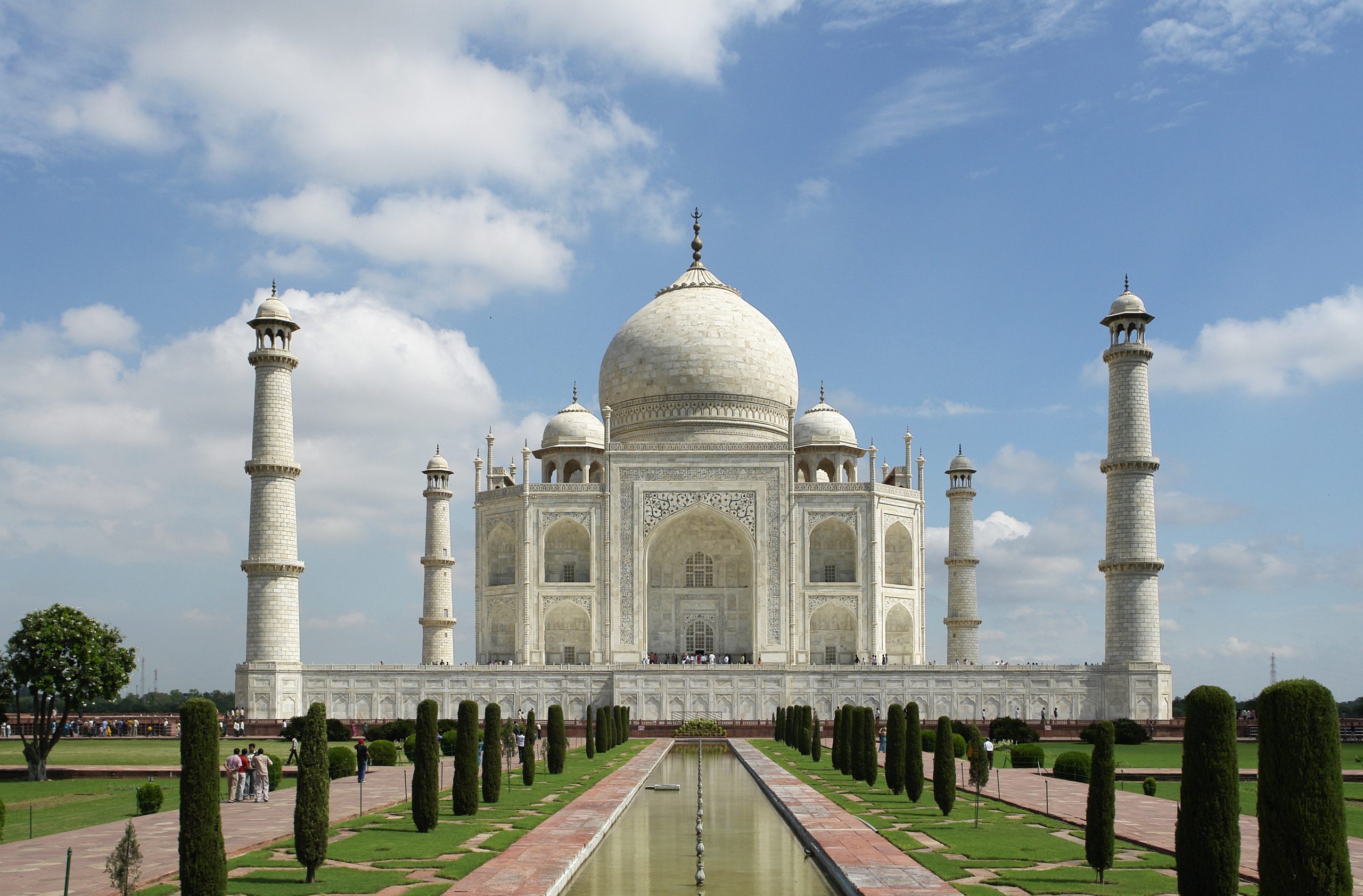
Islamic art developed distinctive characteristics that reflect the tradition’s emphasis on divine unity and transcendence. The general avoidance of figurative representation in religious contexts led to extraordinary sophistication in geometric patterns, calligraphy, and architectural decoration that express mathematical harmony and divine perfection.
Islamic calligraphy transformed Arabic writing into one of the world’s most elegant art forms, with master calligraphers developing diverse scripts that combine legibility with aesthetic beauty. Quranic verses and religious formulas became central elements of Islamic decoration, creating environments that surround believers with divine revelation.
Islamic architecture achieved remarkable diversity across different regions while maintaining characteristic elements like pointed arches, geometric tile work, and sophisticated water features. The Great Mosque of Córdoba, the Dome of the Rock in Jerusalem, and the Taj Mahal in India demonstrate Islam’s capacity to create magnificent sacred spaces while adapting to local materials and aesthetic preferences.
Synthesis and Interaction
The artistic traditions of the three Abrahamic faiths influenced each other through centuries of interaction and cultural exchange. In medieval Spain, Muslim, Jewish, and Christian artisans worked together to create distinctive hybrid styles that combined elements from all three traditions. The Mudéjar architecture of Christian Spain incorporated Islamic decorative techniques, while Jewish communities in Muslim lands adopted local artistic styles for synagogue decoration.
These interactions demonstrate how religious communities can maintain theological distinctiveness while participating in shared cultural and artistic developments. The circulation of artistic techniques, motifs, and aesthetic principles among the three traditions enriched all their cultural expressions while respecting their individual religious requirements.
Reflection Question
Compare the artistic traditions of Judaism, Christianity, and Islam described in this section. What do their different approaches to religious art—Judaism’s symbolic emphasis, Christianity’s use of art for teaching, and Islam’s geometric patterns and calligraphy—reveal about each tradition’s core theological beliefs and values?
Contemporary Challenges and Global Influence
Judaism, Christianity, and Islam continue to evolve in contemporary contexts while facing challenges from secularization, modernization, and interfaith relations. These ancient traditions demonstrate remarkable adaptability in addressing modern questions while maintaining connection to their foundational teachings and historical development.
Modern Jewish Experience

Contemporary Judaism encompasses diverse movements from Orthodox to Reform that interpret traditional teachings in various ways while maintaining core commitments to monotheism, covenant, and ethical responsibility. The establishment of Israel in 1948 created new opportunities and challenges for Jewish identity, enabling the revival of Hebrew as a spoken language while raising questions about the relationship between religious and national identity.
Jewish contributions to modern thought through figures like Einstein, Freud, and Wittgenstein demonstrate the tradition’s continued intellectual vitality while engaging with secular scholarship. Jewish emphasis on education, social justice, and ethical responsibility has influenced civil rights movements, humanitarian organizations, and international law.
The Holocaust represents the greatest tragedy in Jewish history, destroying one-third of the world’s Jewish population while demonstrating the deadly consequences of religious and racial prejudice. Jewish responses to this catastrophe have included theological reflection, historical documentation, and commitment to preventing genocide while maintaining faith in human dignity and divine justice.
Christian Adaptation and Global Presence

Christianity’s status as the world’s largest religion reflects its remarkable adaptability to diverse cultural contexts while maintaining core theological convictions. Contemporary Christianity encompasses denominations from Eastern Orthodoxy to Pentecostalism that express Christian faith through different liturgical, theological, and cultural forms.
The ecumenical movement has encouraged cooperation among Christian denominations while recognizing their distinctive contributions to Christian tradition. The Second Vatican Council (1962-1965) transformed Catholic relations with other Christians and non-Christian religions while affirming Christianity’s commitment to religious dialogue and social justice.
Christian liberation theology, particularly in Latin America, demonstrates how traditional Christian teachings can address contemporary issues of poverty, oppression, and social inequality. Christian engagement with science, human rights, and environmental protection shows the tradition’s capacity to contribute to modern global challenges while maintaining spiritual foundations.
Islamic Revival and Modernization
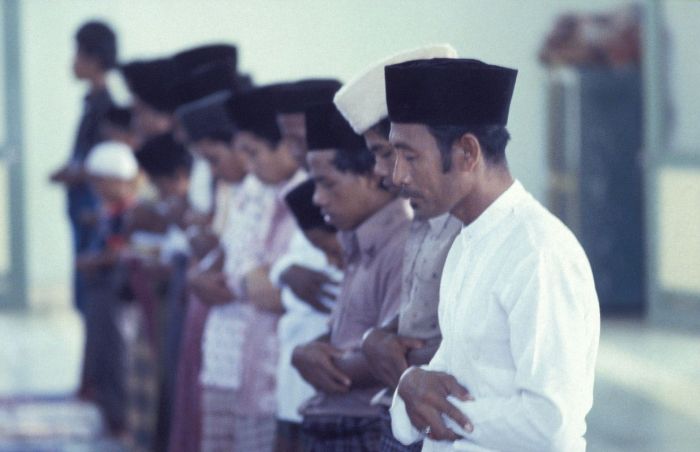
Contemporary Islam encompasses diverse movements from traditional Sufism to modernist reform that interpret Islamic teachings in various ways while maintaining commitment to Quranic authority and prophetic guidance. The Islamic revival of the 20th and 21st centuries reflects both reaction against Western cultural dominance and positive assertion of Islamic values in modern contexts.
Muslim contributions to contemporary global culture include architecture, literature, medicine, and technology that demonstrate Islam’s continued creativity and relevance. The growth of Muslim populations in Western societies has created new opportunities for interfaith dialogue while raising questions about religious accommodation and cultural integration.
Islamic approaches to contemporary challenges including gender equality, economic justice, and environmental stewardship show the tradition’s capacity to address modern concerns while drawing on Quranic principles and prophetic example. The diversity of Muslim responses to these challenges reflects Islam’s global reach and cultural adaptability.
Interfaith Relations and Global Cooperation
The three Abrahamic traditions increasingly recognize their shared heritage and common concerns in addressing global challenges including poverty, environmental degradation, and conflict resolution. Interfaith dialogue initiatives promote mutual understanding while respecting theological differences and cultural distinctiveness.
The Abraham Accords and other diplomatic initiatives demonstrate how shared religious heritage can contribute to political reconciliation and regional cooperation. Academic study of the three traditions encourages scholarly collaboration while advancing understanding of their historical development and contemporary relevance.
Educational programs that teach about all three traditions promote religious literacy and cultural understanding while combating prejudice and extremism. These efforts recognize that understanding religious traditions contributes to global citizenship and peaceful coexistence.
Reflection Question
What role do you think religious literacy and interfaith dialogue should play in promoting peaceful coexistence in our interconnected world?
Conclusion: Shared Heritage for a Connected World
Judaism, Christianity, and Islam offer profound insights into monotheistic faith, scriptural authority, and ethical responsibility that remain relevant for contemporary global challenges. These traditions demonstrate how religious communities can maintain distinctive identities while contributing to shared human values including justice, compassion, and divine worship.
The historical interaction among the three traditions provides models for how different religious communities can engage respectfully while preserving their theological convictions. Their shared emphasis on prophetic revelation, moral responsibility, and ultimate judgment offers alternatives to purely secular approaches to ethics and meaning while respecting human dignity and cultural diversity.
Perhaps most importantly, all three traditions emphasize the importance of practical righteousness over abstract theology, encouraging believers to demonstrate their faith through beneficial action in the world. This emphasis on ethical behavior and social responsibility provides essential guidance for building just and peaceful societies while honoring both human achievement and divine authority.
As our world becomes increasingly interconnected, the Abrahamic traditions’ emphasis on universal human dignity and divine justice offers valuable perspectives for international cooperation and conflict resolution. These ancient wisdom traditions continue evolving while providing timeless insights into the human quest for meaning, justice, and faithful living.
Understanding Judaism, Christianity, and Islam encourages us to approach religious traditions with both respect and critical thinking, appreciating their contributions while recognizing their diversity and complexity. These foundational traditions of Western civilization continue shaping global culture while offering resources for addressing contemporary challenges with wisdom, compassion, and hope.
Putting It All Together
For Further Reading
- Armstrong, Karen. A History of God: The 4,000-Year Quest of Judaism, Christianity, and Islam. Ballantine Books, 1994.
- Corrigan, John, Frederick Denny, Carlos Eire, and Martin S. Jaffee. Jews, Christians, Muslims: A Comparative Introduction to Monotheistic Religions. 2nd ed., Pearson, 2012.
- Goodman, Martin. A History of Judaism. Princeton University Press, 2018.
- McGrath, Alister. Christian Theology: An Introduction. 6th ed., Wiley-Blackwell, 2017.
- Waines, David. An Introduction to Islam. 2nd ed., Cambridge University Press, 2004.

